Our blog today will focus on one of the most commonly co-occuring issues with symptomatic hypermobility –Postural Orthostatic Tachycardia Syndrome (POTS). POTS (which is a type of dysautonomia) is currently getting increased research attention as it is thought it is being responsible for many symptoms of long COVID.
The extra give in ligaments in hypermobility, is believed to be due to a higher proportion of a stretchier type of normal collagen. Collagen is present in connective tissues throughout the body. Therefore, it is possible to have associated problems associated with hypermobility including gut issues, fatigue and dizziness.
Learn more about Hypermobility & EDS
In the literature, it is suggested that with those who live with Hypermobile -Ehlers Danlos Syndrome the incidence of POTS is reported as high as 88%. POTS symptoms most commonly are reported as fatigue, dizziness, brain fog, racing heart and palpitations. But POTS symptoms can include any combination of the following:

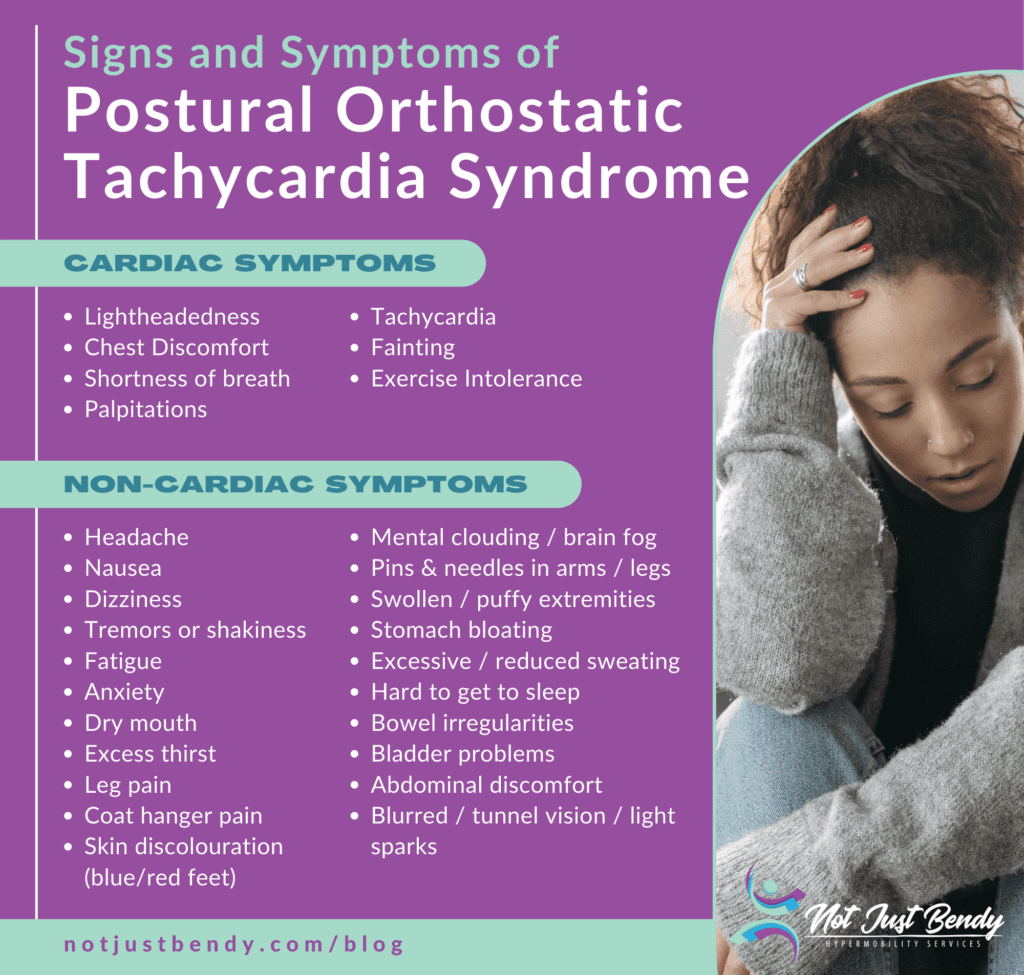
Everyone with POTS has a different combination of symptoms and these symptoms can be explained by many other issues so it is important individuals discuss with their GP for assessment and evaluation of any underlying conditions and for accurate diagnosis.
Understanding POTS
To understand what POTS is we need to have a look at how the body maintains it body processes as you move around. The body has many processes that it controls automatically (without any conscious thought or thought from your brain). Homeostasis, is the self-regulating process by which biological systems tend to maintain stability while adjusting to conditions that are optimal for survival. The body aims to maintain homeostasis and maintaining the blood pressure at a normal level is essential for this.
Blood pressure can be affected by how fast your heart beats (heart rate) and blood going into your heart (venous return) as shown in the formula below.
Blood pressure = Heart Rate x Venous Return.
When lying down, your body can relax and pump blood around with minimal effort. Once the body changes quickly from lying to sitting or standing (like when getting out of bed in the morning) blood can pool (stay) in the legs and arms. This means there is less blood for the heart to pump around. If your blood pressure drops too quickly you would faint (vasovagal syncope), so to make sure your blood pressure does not drop, your body releases hormones (adrenalin) to increase your heart rate to increase blood pressure.
In people with hypermobility spectrum disorder or hypermobile -Ehlers Danlos syndrome, just like their joints, their blood vessels have extra stretch which means more blood can pool in the legs when they stand up. With less blood available (less blood returning to the heart because it is pooling in the legs) the body increases the heart rate to avoid dropping the blood pressure which in extreme circumstance could cause fainting.
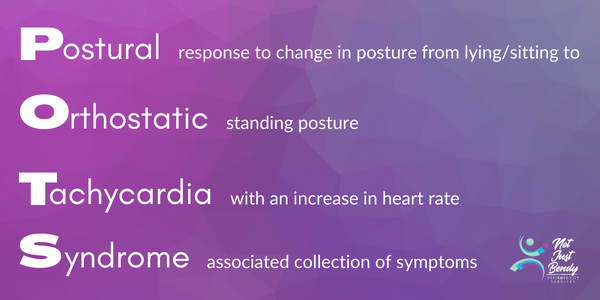
To increase the heart rate the body makes the heart beat faster via activation of the Sympathetic Nervous System (SNS) which is also known as the fight-flight system (SNS). As well as increasing the heart rate there are a raft of associated symptoms associated with this which can account for many of the symptoms listed in the table above.
For adults to be considered with POTS, the heart rate needs to go up by >30 bpm from lying to standing still. Additionally, if your heart rate when laying still is more than 120bpm, this can also indicate POTS. For children, the heart rate needs to be >40bpm.
You can do testing for POTS and other dysautonomia in your own home. Your physiotherapist can supply you with more detailed documentation on how to record this.
Common investigations include; blood tests, ECG, heart echo, Holter monitor of blood pressure and/or heart rate, tilt table testing and cardiologist assessment. Tilt table testing is not always necessary and the nasa lean test can be easily completed without fancy equipment.
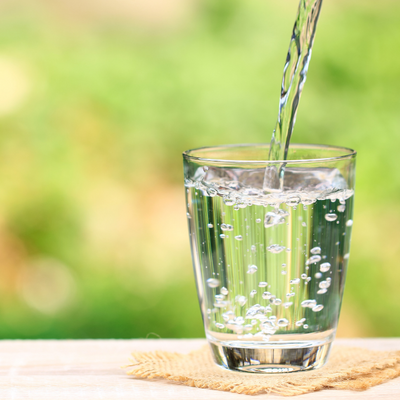
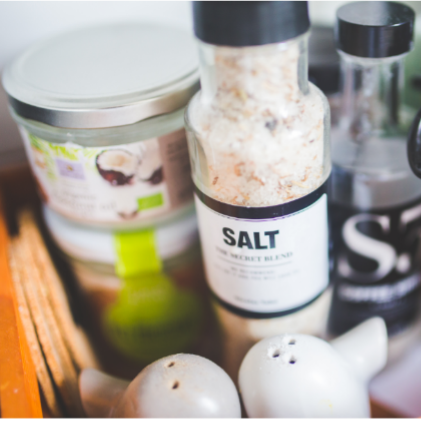

What can I do to help my POTS symptoms?
- Increase fluid intake – More than 2L/ day or 8-10 cups/day (must be in combination with extra salt intake). Extra fluid means extra blood!
- Increase salt intake – Without salt, all that extra fluid will not stay in your body. If you have a family/personal history of high blood pressure, heat or kidney diseases or concerned about risk factors of salt intake, please discuss this with your doctor.
- Compression garments– prevent blood pooling in the legs. There are many options like sports socks/ TEDS, Skins or cheaper alternatives from Aldi/ Target. Full tights or bike pants options available.
- Resting in positions to improve symptoms for short periods – sitting with knees bent up can encourage blood flow to return to the heart and decrease symptoms of POTS. Lying can also relieve POTS symptoms but too much rest can add to de-conditioning which can worsen POTS symptoms in the long term.
- Exercise
- Exercises you can do lying or sitting can be easier than standing.
- Pumping/wiggling feet and legs can help pump blood back to your heart.
- Try not to stand in the one spot – wriggle and move your position from side to side.
- Cardiovascular exercise can improve symptoms in many people with POTS but they need to be paced and appropriate to avoid flare up of fatigue or painful symptoms.
- Not Just Bendy Hypermobility Services Physiotherapists can help you develop an exercise program that is tailored to you.
- Medications
- You can discuss with your GP or cardiac specialist which medications may help
- If your symptoms are affecting your ability to function then it is worth considering review by an electrophysiological cardiologist.
Want some support figuring things out?
Check out the services we offer, learn how we can help, or get in touch to book a session with our therapists.
Learn More
You can find more information curated by Not Just Bendy at:
- What Is Hypermobility?
- Mast Cell Activation Disorders
- Postural Orthostatic Tachycardia Syndrome (POTS)
- Exercise Tips for Postural Orthostatic Tachycardia Syndrome (POTS)
- Hypermobile Hips
- Women’s Health Issues In Hypermobility
- Switching on the Lightbulb to see Hypermobility Disorders
- Hypermobility Screening & Prevention
- Exercise Classes for Hypermobility
- Exercise Physiology
- Hypermobility Resources
- Hypermobility Brisbane Physiotherapy
References:
Brock, I., Chopra, P., Maitland, A., & Francomano, C. (2021). Frequency and co-occurrence of comorbidities in the Ehlers-Danlos syndromes. Molecular Genetics and Metabolism 132S1, S59-S198.
Raj SR. Postural tachycardia syndrome (POTS). Circulation. 2013 Jun 11;127(23):2336-42.
Hakim A, O’Callaghan C, De Wandele I, Stiles L, Pocinki A and Rowe P (2017) Cardiovascular autonomic dysfunction in Ehlers–Danlos syndrome—Hypermobile type American Journal of Medical Genetics Part C: Seminars in Medical Genetics 175C: 168 -174
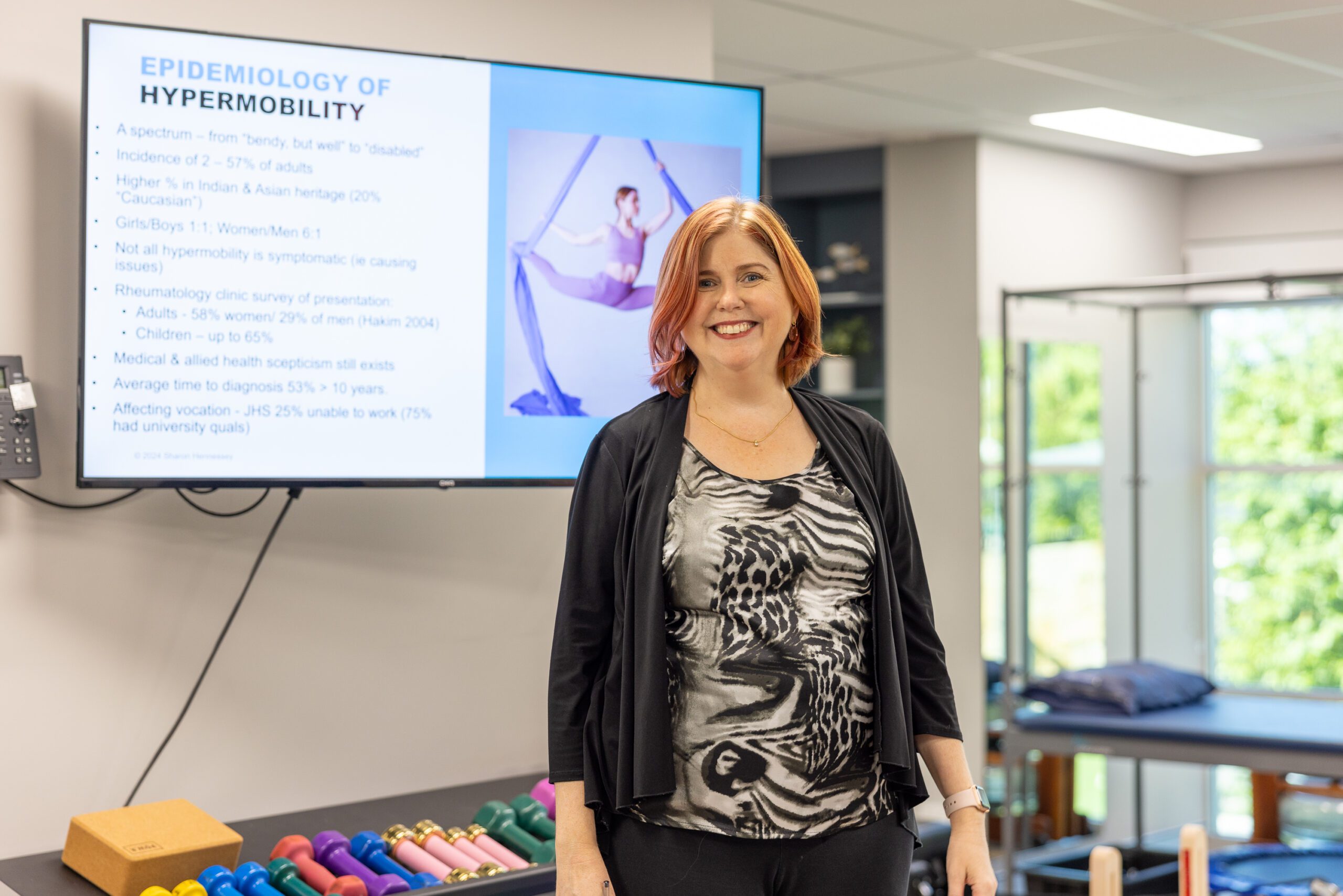
Want To Learn More From Sharon Hennessey About Hypermobility?
Sharon’s ground-breaking hypermobility educational courses are launching soon – sign up now to know when the courses go live!
Join the wait list to be the first to access exclusive video content, tailored for health professionals, patients, carers, and anyone seeking to better understand hypermobility.
